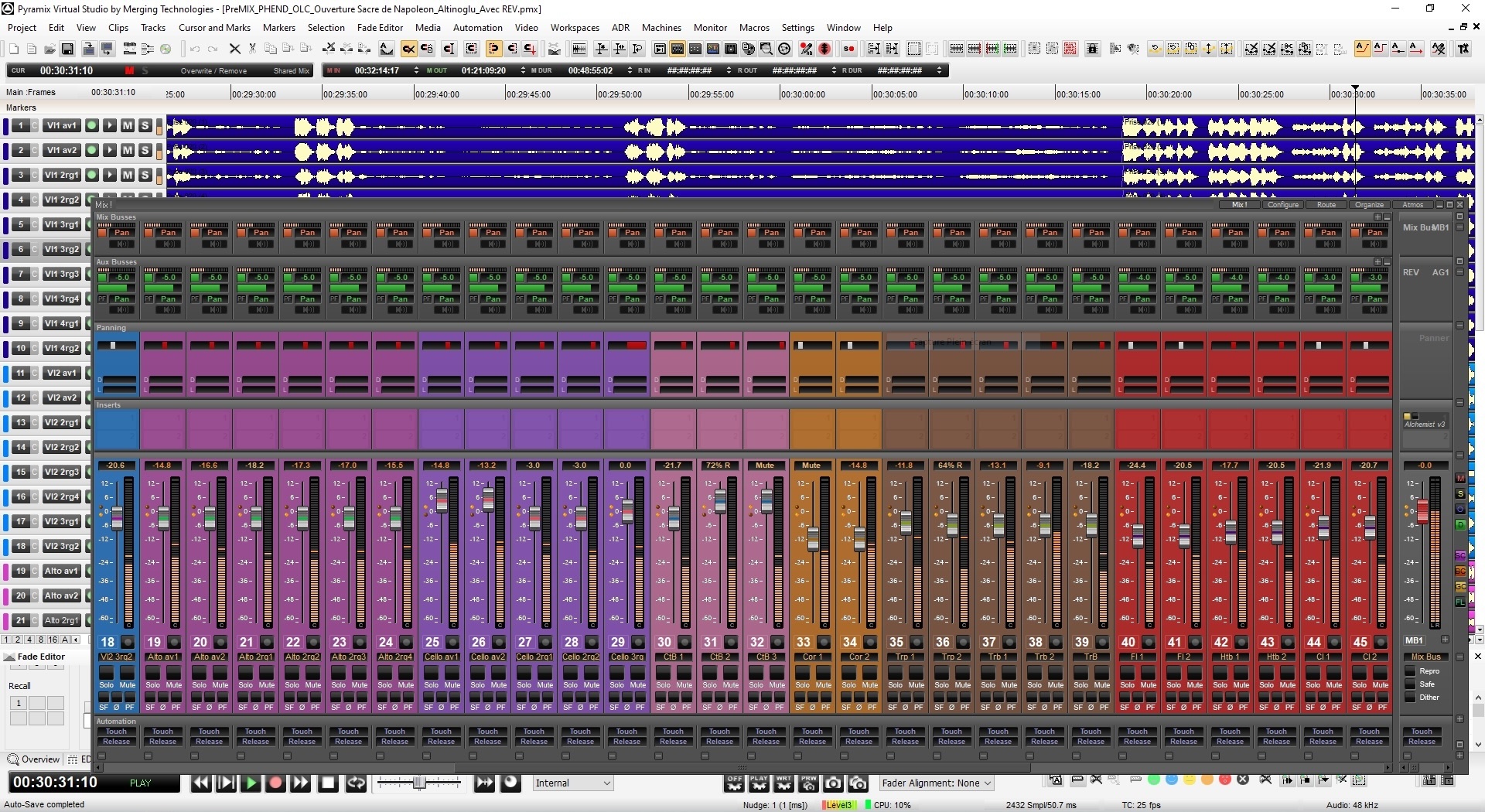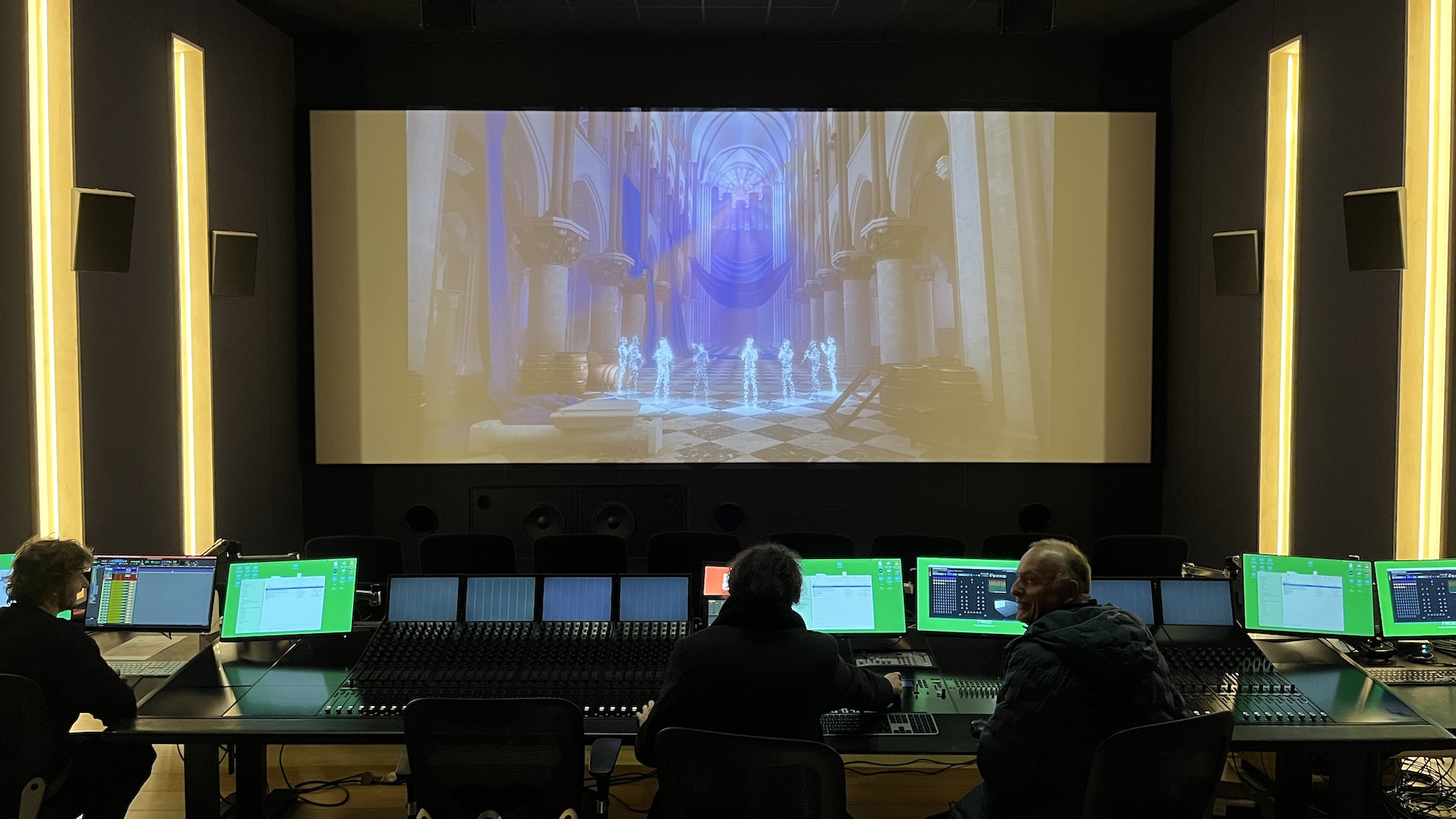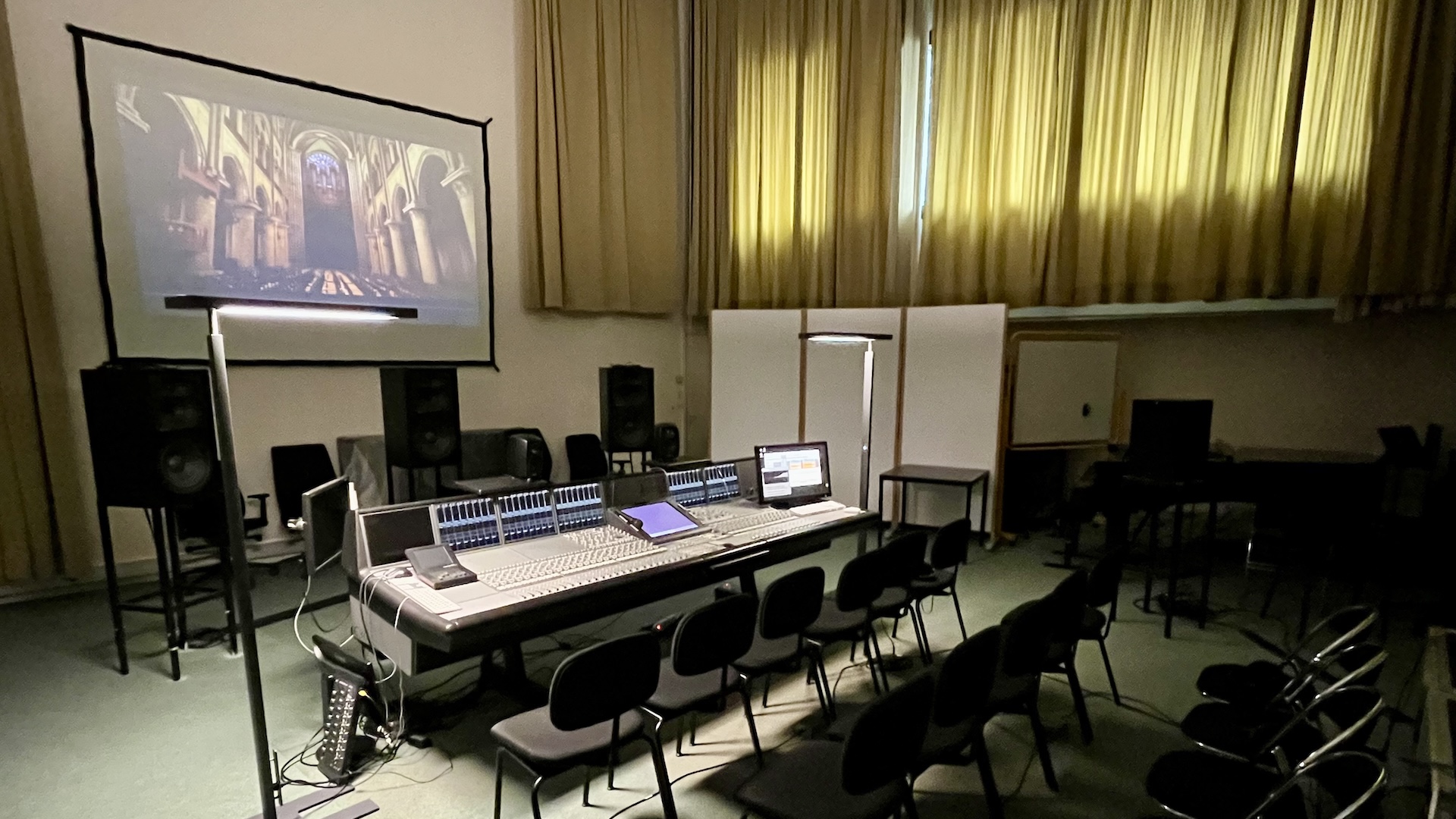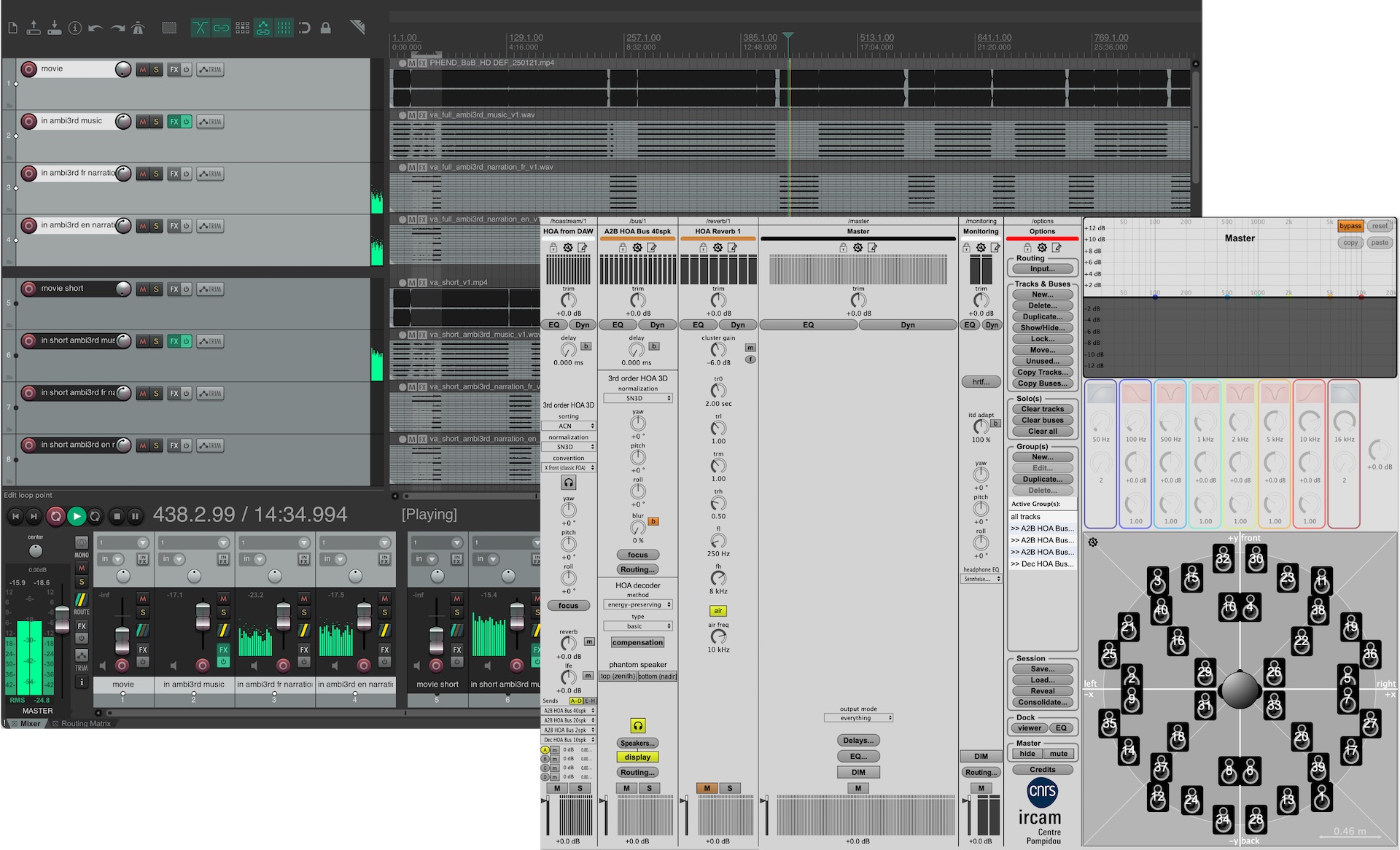Post-Production
Post-Production
There were two post-production stages: the first focused on the musical balance and authenticity of the auralisations, the second on adjusting the overall spectrum of the concert to the various distribution formats. To ensure authenticity, the sound engineers used reference recordings captured in situ during the recording sessions. They adjusted the mix gains of the individual musicians prior to convolution so that the final auralisation, rendered at the reference microphone position, matched the balance of voices heard in the original recordings.

Example Pyramix project used during mix sessions.
The second stage was a series of sessions, each dedicated to the export of the ambisonic format to various diffusion formats (binaural, transaural, 5.1, etc.). For example, the creation of the Dolby Atmos DCP for theatrical screenings required a half-day session in a licensed studio.

Dolby Atmos mastering at Poly Son with La Puce à l'oreille.
Distribution
To facilitate distribution, the ambisonic auralisation was decoded into a wide range of multichannel formats. Except for the DCP Dolby Atmos version, all the other formats were created using either Panoramix or Transpan, both built on the Spat5 library. Transpan was used to generate the transaural version, intended for users on laptops and other 2.0 setups. Panoramix was used for all other multichannel exports (5.1, 7.1, 9.1, etc.), as well as the binaural version.

Transaural decoding session.
The binaural version was primarily created for viewers on online streaming platforms (Youtube, Vimeo, etc.). Careful attention was given to delivering a sharp and immersive spatial experience, despite the limitations of non-individualised rendering. Binaural decoding was performed using the HRTF 1032 from the LISTEN database, selected because it was most frequently rated as the best by participants in previous perceptual HRTF evaluation studies.

Reaper and Panoramix projects used for 7.1, 5.1, binaural, etc. decoding.